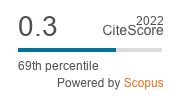- Home »
- Issues »
- 23/2 – Fall 2018 »
- Articles »
Theology and Catastrophe
A (Girardian) Semiotics of Re-Humanization
Abstract
Girardian anthropology tells us that the birth of human meaning and its signs are the result of a primitive catastrophe. But if these origins are exposed by the biblical record it is because another, transformative semiosis has opened in hu- man existence. Girard’s seminal remarks on the Greek logos and the logos of John, endorsing Heidegger’s divorce of the two, demonstrate this claim and its source in the nonviolence of the gospel logos. In effect, there is a second catastrophe, one embedded in the bible and reaching its full exposition in the cross, generating a new semiosis in humanity. The transformation may be measured by viewing the original semiosis in a Kantian frame, as a transcendental a priori structured by violence. The second catastrophe generates an equivalent new a priori of nonviolence. The work of Charles Peirce illustrates both the way in which interpretants (of signs) open us progressively to new meanings, and how this process may ultimately be conditioned by love. The catastrophe of the gospel, therefore, works both on the dramatic individual level, with Paul of the New Testament as the great example, but also in slow-motion over semiotic history, changing the meaning of existence from violence to nonviolence.
Cite this article
Bartlett, Anthony W. “Theology and Catastrophe: A (Girardian) Semiotics of Re-Humanization.” Forum Philosophicum 23, no. 2 (2018): 171–88. doi: 10.35765/forphil.2018.2302.10.



